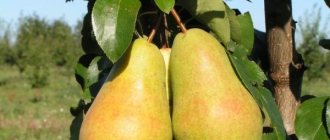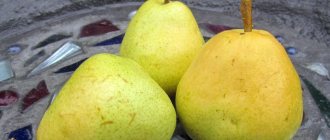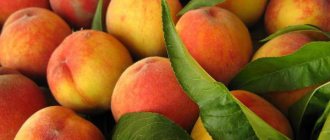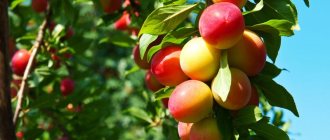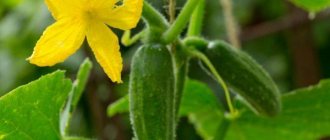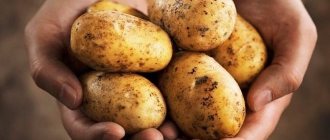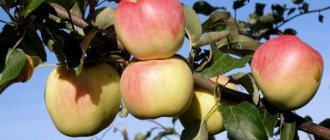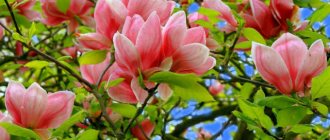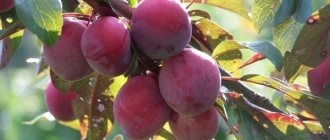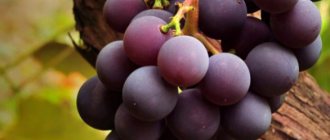Features of pear varieties for the Urals
Ural region.
Scientists and breeders have worked hard to develop varieties of pear trees capable of growing and developing in the Urals.
The climate of the Urals is sharply continental. The characteristic features of the area are long and harsh winters with severe frosts, and short summers with dry and hot weather. Precipitation falls very unevenly throughout the year.
Taking into account the characteristics of the region, trees that can grow and bear fruit in such a climate must have good tolerance to drought and frost.
What varieties can be grown
Varieties suitable for cultivation in the Urals must have certain characteristics that a tree cannot do without in such a climate. The most important among them are:
- high winter hardiness;
- drought resistance;
- early ripening;
- good immunity to diseases and pests.
It is best to choose adapted summer and autumn varieties for a given area.
Late-ripening representatives usually do not have time to ripen in cold climates. They are removed from the tree before frost occurs in an unripe state, and stored in suitable conditions so that they reach maturity.
How to choose the right one
The choice of variety for Siberia should be approached responsibly. Unfortunately, many gardeners choose those varieties that have an attractive appearance and are easy to care for. The first thing you need to pay attention to is the winter hardiness of the crop. It needs to bear fruit in different weather conditions. The next point is the demands on the soil.
The video shows fruiting pears in Siberia:
Choose a variety that can fully grow and bear fruit on your site. And of course, the important point is the taste and size of the fruit. It all depends on what you are going to use them for. If you eat it fresh, choose a pear that is sweet and juicy. And small-sized fruits that do not have any special taste are suitable for processing.
How pears are processed in the spring, and which chemicals are the most effective, the information at the link will help you understand.
What to do and how to treat it when the leaves on a pear turn black are described in great detail in this article.
It is also worth learning more about what pear diseases exist and what their treatment may be, for this you should follow the link and watch the video: //gidfermer.com/sadovodstvo/bolezni/grushi-i-ix-lechenie.html
What are the best varieties of early pears, and what are they called, this information will help you understand.
Summer
Early ripening varieties of pears bear fruit by the end of the summer period. The yield of such varieties is usually high. The shelf life is very short. Ripe fruits must be removed from the trees in time, as they can become overripe and fall off.
Penguin
The Penguin pear begins to bear fruit in the 4th year after planting. Medium-sized trees grow quickly and have a dense crown. The fruits mature in August.
Pros:
- high winter hardiness;
- tender, sweet pulp;
- compact size of the tree.
Minuses:
- crown density;
- susceptibility to scab.
Pear Penguin.
Big
Trees of this variety are medium-sized and characterized by high yield rates. The fruits of this pear should not be removed from the tree unripe, as this may affect the taste.
Pros:
- pleasant taste and aroma;
- frost resistance;
- immunity to disease.
Minuses:
- not detected.
Big pear variety.
Rainbow
Rainbow pear variety is characterized by high yield and early fruiting. The trees are small with a rounded crown. The pear usually bears its first fruits already in the fourth year of life. Harvest ripening occurs towards the end of summer.
Pros:
- pleasant taste;
- high winter hardiness;
- immunity to diseases and insects.
Minuses:
- susceptibility to drought.
Rainbow pear.
Pear Zarechnaya (Compact)
Created at the Sverdlovsk breeding station. Distributed in the Volga-Vyatka region and the Urals. Bred from the varieties “Rannyaya Mlievskaya” and “Tema” (Lukasheva). The tree is medium sized and grows quickly. Compact round crown, medium density. Over time, the tree grows and the crown becomes spreading. Skeletal branches grow from the trunk at an optimal angle. A lot of leaves grow. The bark on the branches and trunk is gray with a yellowish tint.
The current year's shoots are dark olive in color and pubescent. The buds are wedge-shaped, small, slightly deviated. The leaves are elongated, without serration, leathery, without pubescence. The flowers are collected in a shield. The fruits ripen on fruit twigs, spears and complex ringlets.
Fruiting begins 5-6 years after grafting. Pears can be harvested in early autumn. Ripe fruits have fine-grained inclusions, delicate, very sweet pulp, of moderate density. Taster rating: 4.3-4.5 points. The harvest begins at the end of August. When grown without watering, pears grow up to 140 g. The shape is classic pear-shaped. The main color is golden yellow, the cover color is blurred, orange, of medium saturation. The skin of the fruit is thin, the chamber with medium-sized seeds. The peduncle is of characteristic length and relatively thick. Externally very attractive. Ripe fruits remain on the branches for a long time.
When grown in industrial gardens, the yield averaged 125 c/ha. Collected pears can be stored for no more than a month. A distinctive feature of this variety of Ural pears can be considered the immunity of the gall mite.
An early autumn variety of pears, included in the State Register in 2004. Created at the Sverdlovsk breeding station. Recommended for the Sverdlovsk, Chelyabinsk regions, Perm Territory, Udmurtia and Bashkortostan.
Trees of the "Sentyabrina" pear variety are of medium height and quickly grow to their maximum size. The crown turns out to be pyramidal and spreading. Formed without trimming. Skeletal branches extend from the trunk at the required angle. The number of overgrowing branches and leaves is moderate. The main crop is formed on spears and ringlets, which branch out over time. Young branches grow straight, internodes are of medium length. The flower buds on them are large, elongated, pointed at the ends. The leaf blade is large, elongated, rich green in color, with a characteristic shine, without edges. The leaf, slightly curled along the central vein, hangs down.
The flowering of the Dobryanka pear begins with the onset of stable heat. The fruits ripen, weighing up to 190 g, classic elongated pear-shaped, smooth. Initially, the fruits are dark green; as they ripen, the color turns yellowish-green with brownish-red spots. The peduncle is long, slightly curved, thickened. The fruit is covered with a matte skin, dry to the touch. The seeds are elongated, red-brown. There are not very many of them in the seed chamber. The pulp contains a lot of sweet and sour, very tasty juice, without hard grains. Tasters rate the fruits at 4.7-4.8 points. Pears have a very attractive appearance.
The collection begins at the beginning of autumn. Even ripe fruits hold tightly to the tree. They are stored for no more than 30 days. The harvested crop can be transported over long distances while maintaining its presentation. Pears of the "Sentyabrina" variety are suitable for use both fresh and suitable for processing.
Fruits on the tree begin to appear 4-5 years after grafting. The variety is self-sterile, but any varieties that bloom at the same time are suitable as a pollinator. Brings a good harvest every year. The variety is resistant to frost and spring frosts. Even flowers are not damaged by low temperatures. The tree is not damaged by scab and gall mite.
Autumn
Autumn ripening pear varieties have a longer shelf life. Fruit ripeness usually occurs in September. It is necessary to harvest the tree immediately, since ripe pears on the branches quickly become overripe and spoil.
Chusovaya
Trees of the Chusovaya variety are vigorous. The crown has a pyramidal shape. The harvest ripens in the first half of September.
Pros:
- tasty, sweet fruits;
- cold resistance;
- long shelf life.
Minuses:
- large, dense tree.
Chusovaya pear.
Fun
Trees of the Zabava variety are medium-sized. They are distinguished by a wide, medium-thick pyramidal crown. The pear is early-bearing and bears the first harvest 5 years after planting. The fruits ripen by mid-September.
Pros:
- pleasant, sweet and sour pulp;
- long shelf life;
- strong resistance to cold.
Minuses:
- immunity is average.
Pear Fun.
Autumn sweet
Autumn sweet belongs to medium-sized trees. The crown has a wide pyramidal shape. The fruit ripening period occurs at the end of September - beginning of October. The pear begins to bear fruit 5 years after planting.
Pros:
- the fruits are juicy and sweet;
- immunity to scab;
- decent shelf life;
- high frost resistance.
Minuses:
- No.
Sweet autumn pear.
Skorospelka Sverdlovskaya (Talitsa)
Pears of this variety ripen quickly. You can start collecting fruits from mid-August. The parents of “Skorospelka” were “Yellow Bere” and “Early Summer”. The variety turned out to be successful, the tree is vigorous, the crown is pyramid-shaped, spreading, and quickly grows to its maximum size. The skeletal and overgrowing branches are not very thick. The ripened harvest greatly bends the branches. To prevent the branches from breaking off from the weight of the fruit, supports are required for them.
The fruits are small, no more than 110 g, more like medium-sized apples. The peel is smooth, slightly rough. The fruits are light yellow in color, with large hardened dots on the surface. The pulp of pears contains almost no hard inclusions, is cream-colored, very juicy, sour-sweet with a harmonious honey aroma.
The main advantage of the Talitsa pear variety is considered to be early ripening - the crop is ready for harvest after 2.5 months from flowering. This variety is quite productive - up to forty tons of fruit can be collected from each hectare. The tree begins to bear fruit annually at 5-6 years of age. As a zoned variety for the Urals, the variety is very frost-resistant, and spring frosts are not a problem for it. "Skorospelka Sverdlovskaya" is almost not affected by scab.
Winter
Winter ripening pears begin to ripen around the end of September. The fruits of these varieties have a long shelf life. However, if they are not removed from the tree before frost sets in, the crop will freeze and quickly deteriorate.
Lyra
The tree of the Lira variety is large and has a medium-dense, wide-pyramidal crown. The pear begins to bear fruit 4-5 years after planting. The variety's productivity indicators are high.
Pros:
- large fruit size;
- long shelf life;
- resistance to scab;
- immunity to cold.
Minuses:
- No.
Pear Lyra.
Perun
Trees of the Perun variety are characterized by medium growth vigor. The crown is round, spreading, and not prone to thickening. The first fruits appear in the fourth year of the tree's life. Harvest ripening period is mid-October.
Pros:
- long shelf life;
- complete resistance to scab;
- universal use of fruits.
Minuses:
- average winter hardiness;
- fresh taste of fruits.
Pear Perun.
Red-sided
Trees of medium height are distinguished by a spreading, rounded crown. The first harvest is usually harvested already in the 5th year after planting. The fruits ripen towards the end of September and tend to fall off.
Pros:
- long shelf life of the crop;
- immunity to disease;
- high resistance to cold.
Minuses:
- tendency to shedding;
- graininess and astringency of the pulp.
Columnar
Pear Decor columnar.
The peculiarity of columnar varieties is their unusual compact shape with noticeable yield. But they have a rather weak root system, which can freeze in cold regions. Although some colony varieties are grown in the Urals. Among them:
- large-fruited summer variety Carmen;
- frost-resistant hybrid G5;
- cold-resistant variety Decor;
- autumn Sanremi;
- stable Yakovlev.
Which pear seedlings are best to choose?
When choosing a pear seedling, consider the following:
- Age. Some gardeners argue that you need to buy tall seedlings, but this is not so. Experienced experts advise buying young seedlings whose stem thickness does not exceed ten millimeters.
- Condition of the roots. The quality of a seedling can be determined by the state of its root system. The plant should have a formed root 25-35 centimeters long.
- Standard When choosing, carefully inspect the branches and stem. They should have a uniform color without dark spots.
Peculiarities of caring for pears in this region
For successful growth and development, a tree needs proper care.
- Pears usually do not need much fertilizer. However, if the shoot growth rate is low, the plant will benefit from feeding with peat, humus or fertilizers based on phosphorus and potassium.
- The pear tree needs abundant watering only during periods of severe summer drought. The rest of the time, it is enough to water the tree only a few times in spring and summer.
- Pruning and shaping is important to avoid overloading the tree and to form the correct crown. Pruning should be done in the spring, since autumn in the region can be quite cold and the shoots may freeze.
- Before the onset of winter, the trunk and main branches must be treated with lime mortar. The tree trunk circle should be dug up, watered with plenty of water and covered with a thick layer of sawdust.
- In order not to lose the harvest, it will be necessary to prevent various diseases and pests.
